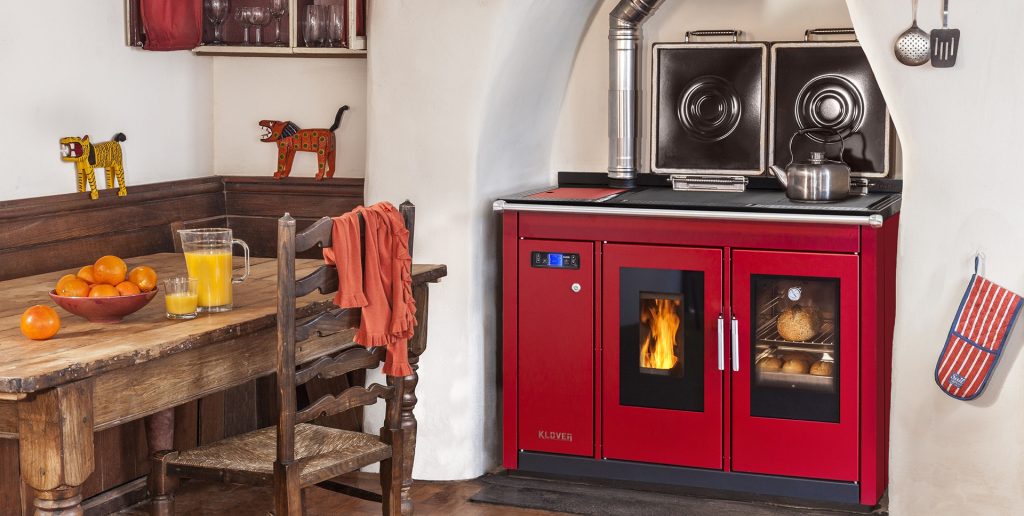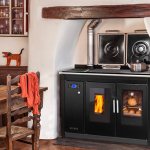
The Renewable Heat Incentive (RHI) is a government financial incentive which encourages the use of renewable energy and heating. With the Renewable Heat Incentive, you can get money.
towards the costs of running a renewable heating system to heat your home or commercial property.
But how much is the Renewable Heat Incentive? Well, in the below article we explore exactly what costs are involved with the Renewable Heat Incentive as well as how much you could expect to receive through RHI.
The Renewable Heat Incentive’s costs are reasonably straight forward. You only pay for the initial cost of installing a renewable heating technology, as well as the on-going cost of fuel and maintenance. But, with the Renewable Heat Incentive, these initial and ongoing costs are in theory recovered from the regular payments (incentive) you receive from the government.
When considering the costs involved with RHI you firstly need to consider your initial investment. How much is the renewable heating system you are looking to install along with the costs of installation? Next, you need to think about the on-going costs of fuel as well as maintenance. What are the costs of wood chips to heat your home, for example? Or how often do you need to get your system serviced?
There are various elements to consider when it comes to the costs of the Renewable Heat Incentive, but the good news is that you will hopefully get all of your investment back through your regular incentive payments.
Read more about the Renewable Heat Incentive with our Complete Guide To RHI
How Is The Renewable Heat Incentive Calculated?
The way in which your Renewable Heat Incentive payments will be calculated depends on whether you are applying for the Domestic RHI scheme or the Non-domestic RHI scheme. Both schemes are subject to their respective tariffs, which we go into more detail about below and which will determine how much your incentive payments come to.
Domestic:
Your Domestic RHI payments will all depend on how much heat your renewable heating system generates, as well as the tariff rate for your specific system. You can work out what payments you could receive from the Domestic RHI Scheme by using the government’s Domestic RHI Calculator.
Non-domestic�
When it comes to the Non-domestic RHI scheme, you also use the tariff rates of your specific renewable heating system to work out how much you could receive per kilowatt hour of energy your system produces. Both the Domestic and Non-domestic RHI Tariff rates can be found further down this article.
Are Renewable Heat Incentive Payments Taxable?
Taxation of Renewable Heat Incentive payments is rather complicated. The taxation of payments received from Domestic and Non-domestic Renewable Heat Incentive schemes will change, and in fact, the tax you pay isn’t affected by the type of RHI scheme making the payment but on how the heat is used.
For example, if you’re using the heat for the sole purpose of heating your home, then the payments you receive aren’t chargeable to income tax. However, if the payments are received for both personal domestic use and any other purpose (for example, providing heat to a neighbour for a fee) then the payment relating to the non-personal use is chargeable to income tax.
When it comes to the Non-domestic RHI scheme, any RHI payments you receive are a business receipt and are subject to the normal income tax and Corporation tax rules. However, if you are a landlord, then the tax treatment on payments received for heat generated for the use of a tenant depends on whether you charge your tenant separately for the heat provided. If there’s no separate charge for the heat provided, the payments should be deducted from the cost of providing heat. If you charge separately for the heat used by your tenant, then the payments received are chargeable as miscellaneous income.
Is The Renewable Heat Incentive “VATable”?
VAT and the Renewable Heat Incentive is a complicated relationship. You do pay VAT when purchasing a renewable heating system and paying for the installation and maintenance of such a system, however, this is often at a reduced rate of VAT of 5%. For example, Solar Panels, Ground-source Heat Pumps, Air-source Heat Pumps, and Wood-fuelled Boilers are all energy products where the reduced VAT rate of 5% applies. Solid fuel for domestic and residential use or for non-business use by a charity is also eligible for the reduced VAT rate.
As a business, when it comes to claiming any of this VAT back then it gets a little more tricky. HMRC normally considers that an RHI payment represents non-business income and so should fall outside the scope of VAT. This means that businesses are not required to account for VAT on such income. However, as a consequence of this, HMRC has challenged some businesses’ entitlement to recover VAT incurred on costs used to generate RHI payments, arguing that those costs are not attributable to taxable business activities.
How Much Are The Renewable Heat Incentive Payments?
How much your regular RHI payments (incentive) will be will depend on various factors. Firstly, what scheme are you applying for? The Domestic or Non-domestic scheme? As both schemes have separate tariffs. Then, you need to consider what renewable heating system you are using, as each system is subject to different tariff rates. For example, you could expect a higher p/kWh (Pence Per Kilowatt-hour) for a solar thermal system compared to a biomass system.
If you are applying for the domestic scheme, then you can work out what payments you could receive from the Domestic RHI Scheme by using the government’s Domestic RHI Calculator.
If you are applying for the Non-domestic RHI scheme, then you can work out how much your regular payments would be with the below Non-domestic tariff table.
Want To Find Out More About The Renewable Heat Incentive?�
If you would like to find out some more information about the Renewable Heat Incentive�or any of our renewable heating systems and technology, then please get in touch today. You can get in touch by using ourcontact form, by emailing us at: info@agreeneralternative.co.uk, or by calling us on 01273 455 695.
What Are The RHI Tariffs
The tariffs for the Renewable Heat Incentive set the rate for your Renewable Heat Incentive payments. If you join the scheme and stick to the schemes rules you will receive quarterly payments over seven years for the domestic scheme and 20 years for the non-domestic scheme. The tariffs are set by the Department for Business, Energy, and Industrial Strategy (BEIS), and are detailed below:
Domestic RHI Tariffs –�The below Domestic RHI tariff table shows the technologies that are eligible for Domestic RHI and the rate for each technology. As you can see, The RHI provides a big incentive for owners to invest in ground source heat pumps and solar thermal renewable heat technologies. The tariffs are based on pence/kWh of renewable heat delivered.
| RHI Domestic paid over 7 years | p/kWh from Jan 2015 | p/kWh from Apr 2015 | p/kWh from Jul 2015 | p/kWh from Oct 2015 | p/kWh from Jan 2016 | p/kWh from Apr 2016 | p/kWh from Jul 2016 | p/kWh from Jan 2017 | p/kWh from Apr 2017 | p/kWh from Jul 2017 | p/kWh from Oct 2017 | p/kWh from Apr 2018 | p/kWh from Apr 2019 |
| Solar thermal | 19.2 | 19.51 | 19.51 | 19.51 | 19.51 | 19.74 | 19.74 | 19.74 | 20.06 | 20.06 | 20.06 | 20.66 | 21.08 |
| GSHPs | 18.80 | 19.10 | 19.10 | 19.10 | 19.10 | 19.33 | 19.33 | 19.55 | 19.86 | 19.86 | 19.86 | 20.46 | 20.87 |
| ASHPs | 7.3 | 7.42 | 7.42 | 7.42 | 7.42 | 7.51 | 7.51 | 10.02 | 10.18 | 10.18 | 10.18 | 10.49 | 10.70 |
| Biomass | 10.98¹ | 8.93 | 7.14 | 6.43 | 5.14 | 5.20 | 4.68 | 6.44 | 4.28 | 3.85 | 6.54 | 6.74 | 6.87 |
Non-domestic RHI Tariffs –�The below Non-domestic RHI tariff table shows the technologies that are eligible for Domestic RHI and the rate for each technology. The Non-domestic RHI also provides a big incentive for owners to invest in ground source heat pumps and solar thermal renewable heat technologies. The tariffs are based on pence/kWh of renewable heat delivered.
| RHI Commercial paid over 20 years | p/kWh from 1 Jan 2015 | p/kWh from 1 Apr 2015 | p/kWh from 1 Jul 2015 | p/kWh from 1 Oct 2015 | p/kWh from 1 Jan 2016 | p/kWh from 1 Apr 2016 | p/kWh from 1 Jul 2016 | p/kWh from 1 Oct 2016 | p/kWh from 1 Jan 2017 | p/kWh from 1 Apr 2017 | p/kWh from 1 Jul 2017 | p/kWh from 1 Oct 2017 | p/kWh from 1 Apr 2018 | p/kWh from 1 Apr 2019 |
| Solar thermal | 10.0 | 10.16 | 10.16 | 10.16 | 10.16 | 10.28 | 10.28 | 10.28 | 10.28 | 10.44 | 10.44 | 10.44 | 10.75 | 10.97 |
| GSHPs | 8.7 | 8.84 | 8.84 | 8.84 | 8.84 | 8.95 | 8.95 | 8.95 | 8.95 | 9.09 | 9.09 | 9.09 | 9.36 | 9.55 |
| ASHPs | 2.5 | 2.54 | 2.54 | 2.54 | 2.54 | 2.57 | 2.57 | 2.57 | 2.57 | 2.61 | 2.61 | 2.61 | 2.69 | 2.74 |
| Biomass | 6.8 | 5.87 | 4.40 | 4.18 | 3.76 | 3.62 | 3.26 | 3.10 | 2.91 | 2.85 | 2.71 | 2.96 | 3.05 | 3.11 |
How To Claim The Renewable Heat Incentive
If you’re looking to claim the Renewable Heat Incentive but just don’t know where to start, then not to worry as it is reasonably straight forward to get started.
If you’re looking to claim the Domestic Renewable Heat Incentive, then firstly you must be the homeowner of the property you are looking to install your eligible RHI heating system in. Your renewable heating system must also be installed by an MCS certified installer. In order to qualify for the Domestic RHI, you will also need to prove that your property is considered domestic by providing your Energy Performance Certificate (EPC).
If you’re wanting to apply for the Non-domestic Renewable Heat Incentive, then the process is a little longer but still straight forward enough. Firstly, you must be the owner of the installation, or where there are multiple owners, you must be able to prove that you have permission to act for the other owners. It is also important that your renewable heating system was first commissioned on or after the 15th of July 2009. The system must also have been new at the time of installation. The Non-domestic RHI scheme has some additional requirements also, for example, the system must either use liquid or steam as the heat delivery medium, and the system must provide heat for at least one eligible heat use. The installation must not solely provide heating to single domestic premises. No public grants can be used to fund any part of Non-domestic Renewable Heat Incentive installation unless it has been repaid.
As long as you are compliant with the above, you can then get in touch with Ofgem to apply for the Domestic RHI Scheme or the Non-domestic RHI Scheme.
If you would like to find out some more information about the Renewable Heat Incentive and the costs involved with installing a renewable heating system in your home or commercial property or to enquire about how much your payments from RHI could be, then please get in touch today. You can get in touch with A Greener Alternative by using ourContact Form, by emailing us at:info@agreeneralternative.co.uk, or by calling us on 01273 455695. Discover more about A Greener Alternative and what makes us a leading installer ofrenewable heating systems in Sussex and The South East today…

















